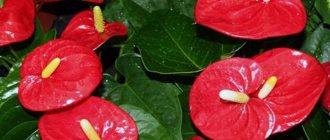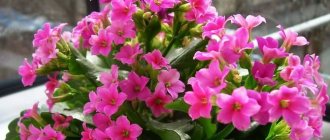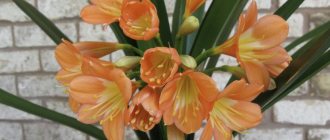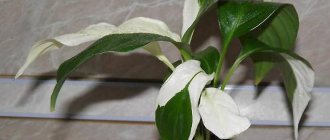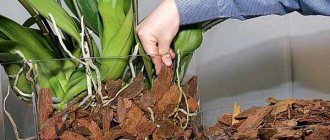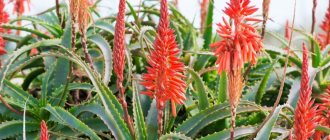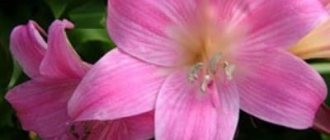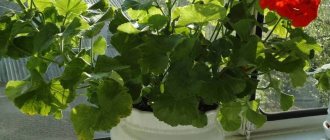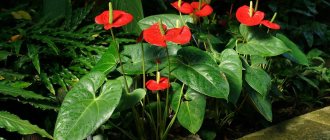A passionate florist selects pets so that, in a cramped window sill, they provide beauty that changes from season to season. Not many indoor plants enjoy winter flowering. Hippeastrum is a luxurious winter flower with several huge stars on one peduncle. Why does hippeastrum not bloom, how to stimulate the creation of a bouquet on the windowsill? We use the experience of many lovers of bulbous plants.
Description of the plant
This very decorative flower belongs to the Amaryllis family and is bulbous. The variety of different shapes and colors was created by the nature of South America and continued by flower growers. There are more than 80 varieties and 600 hybrids of this royal flower. A living bouquet retains its beauty for about two months.
Flowers up to 25 cm in diameter are collected in a bouquet consisting of several giants on one peduncle. The plant reproduces easily, by scales of bulbs, children and seeds. Moreover, after pollination of two different flowers, seeds can be used to obtain a new star color. For a flower to please, it only needs a bright window sill, indoor conditions, and a period of rest when preparations are underway for a new flowering. In good conditions, flowering is possible twice a year. Experienced flower growers can drive out the arrow by a certain date.
Presence of diseases and pests
Why does the imperial hazel grouse not bloom, only leaves?
Experts attribute insect attacks or diseases to the sources of the lack of buds. They will be discussed below.
Stagonosporosis or “red bulb burn”
It is a dangerous type of infection. Symptoms of its appearance include stains of a brownish-reddish hue and small dotted inclusions. The transition of the disease to the aboveground part of the plant threatens its death.
The appearance of the first signs requires active action: the bush is pulled out of the pot and all affected areas are cut off with a sharp, disinfected knife, including 4-6 mm of healthy tissue.
The sections are treated with activated carbon powder and Funzadol, mixed in equal proportions. After clearing the root system of soil, the plant is transplanted into the next box with fresh substrate.
Stagonosporosis
The earth is additionally cleaned with a hot solution of potassium permanganate, the bulb is planted superficially - this will help control its general condition. After the risk of recurrence of infection has disappeared, add soil to the container and continue to care for the hipeastrum as usual.
Anthracosis and late blight
It affects the plant when planted in open ground. The infection develops from fungal spores, which, with sufficient moisture, easily move to healthy parts of the bush.
Attention! If the plant has mechanical damage or a potassium deficiency, the spores spread more actively.
Symptoms of damage include dark spots on the foliage and bulb, and a decrease in their elasticity. Treatment consists of excision of all affected areas, removal of affected leaves and covering all sections with a mixture of activated carbon and Fundazol. The soil is cleaned with 1% Bordeaux mixture.
Pests
Insect attacks on the crop greatly weaken it; the result of the attacks is the absence of buds and a deterioration in the general condition. If the problem is ignored, the plant quickly dies. Common pests that attack hippeastrum include:
- spider and onion mites;
- mealybug;
- scale insect.
To reduce the likelihood of insect damage, open soil is treated with copper sulfate before replanting. Detected parasites are washed off with a napkin previously moistened in a soap solution. If the measure does not give the expected effect, then re-treatment should be done with one of the insecticides - over the entire green part of the plant. The procedure is performed twice, with an interval of 14-21 days.
Mealybug
Important! Many problems with fungal infections and parasitic organisms are associated with attempts to plant hippeastrum in soil taken from the street.
Soil from the street is almost always contaminated with spores and larvae; before planting, it requires sterilization with hot water and special products sold in flower shops.
How to make hippeastrum bloom?
The effectiveness of hippeastrum depends on the moment of acquisition, choice of soil, and maintenance regime. You can propagate the flower yourself, or you can buy it. At the same time, when choosing a bulb, it is necessary to strip it of its covering and examine it for signs of disease:
- Stagonosporosis is determined by a spot with a red border:
- dampness of scales indicates other fungal diseases;
- examine through a magnifying glass, detecting traces of insect pests;
- the bulb in the container should have dry covering scales.
The purchased specimen must be etched in a solution of potassium permanganate or a special preparation. Choose a pot slightly larger than the diameter of the bulb. Before filling with soil, create drainage, a layer of soil, clean sand on which to place the bulb. Add soil around and gently compact. The soil level in the pot should be one centimeter below the edge of the container so that it is possible to loosen the soil.
The soil consists of peat, sand and turf soil in equal parts. The plant is replanted every three years. One bulb is viable for 10 years if well maintained.
Why does hippeastrum not bloom at home, but only produces leaves?
There are many factors due to which a plant refuses to produce flower stalks.
Why hydrangea does not bloom - what to do if a garden flower produces only foliage
Hippeastrum does not bloom at home:
- If there is a lack of nutrients, the lack of potassium and phosphorus elements does not allow the development of a strong and healthy peduncle. Experienced gardeners fertilize every 14 days, adding superphosphate and finely ground wood ash to the soil. Nitrogen preparations will not help - the plant will begin to grow foliage. Nitrogenous fertilizing can cause the hippeastrum to become infected with a fungal infection.
- In the absence of replanting, the plant is planted in minimal containers, and it quickly absorbs all useful substances from the soil. A pot that is too narrow and shallow leads to the root system entwining the entire earthen clod. The solution to the problem is to transplant the bulb into a container 3-4 cm larger than the previous one. The voids formed in it are filled with fresh substrate.
Important! After normalization of the fertilizer application regime, full formation of flower stalks can be expected in the next season. The plant needs time to absorb nutrients and form healthy flower stalks.
Conditions for flowering hippeastrum
There are several determining reasons why hippeastrum does not bloom at home. To make it decorative, you need to meet a few simple conditions:
- cramped pot;
- bulb planting depth;
- do not trim the peduncle after flowering;
- do not feed unrooted plants;
- do not feed before flowering;
- create a period of rest.
Hippeastrum is loved by gardeners for its unpretentiousness. It easily tolerates dry air in an apartment with central heating. During the rest period, it is satisfied with darkness and temperatures up to 13 degrees. At this time, the bulb accumulates energy for flowering. How to make hippeastrum bloom?
A cramped pot does not allow the plant to fatten. Every time you replant after three years, you should change the pot, but so that the distance from the edges to the bulb is 1.5-2 cm. The planting depth should not exceed half the body of the bulb. In this case, the plants are watered through a tray, without soaking the thickened scaly root. After the lump is wet, the remaining water is drained from the pan. Each newly purchased plant must be marked with the name of the variety and time of purchase.
Plants are fed only after rooting. Sometimes it happens that the purchased bulb blooms earlier. If you shake it by the arrow, the bulb will move. Then, despite flowering, there is no need to feed. Wait for rooting, the signal will be growing leaves, then you can fertilize. Sometimes this period takes several months. There is no need to feed the plants during the dormant period before flowering. If there are no leaves, watering is also stopped for a month. After this, the plant will throw out an arrow, and then you can start fertilizing watering.
Despite the recommendations, the hippeastrum does not bloom, what should I do? You can use a radical method. For the summer, arrange the stubborn man outdoors at the dacha. In summer it will grow a large rosette of leaves. Before the first frost, the plant must be dug up and placed indoors or in a greenhouse to dry. When the leaves dry out, they transfer nutrients to the bulb. You should wait for natural drying. This will transfer the nutrients to the bulb.
Now plant the bulb in a pot and put it away for a month in a dark, cool place. Flowering will be long and abundant. Creating a dormant period for hippeastrum is a prerequisite for obtaining a flowering plant. Proper care and control of pests and diseases will allow you to get a flowering plant even twice a year.
Care after flowering
And so the hippeastrum has faded, what to do next, how to care for it after flowering?
The plant must be placed in a bright room.
If it doesn’t get enough sun, the flower buds will grow very slowly. And the flower may not bloom next season.
It is necessary to ensure excessive systematic watering.
ATTENTION: It is forbidden to trim the flower arrow, as it contains a huge amount of vitamins, microelements and nutrients necessary for the flower.
The seed pods are also left with it. It is necessary to wait until the flower arrow completely withers on its own. It needs to be completely dry. By this point, the arrow will have given up all the necessary microelements, and it can be cut off.
In some subspecies, the arrow falls off on its own.
TIP: In the summer, after flowering, the plant must be fed with fertilizers.
This procedure contributes to the proper formation of healthy planting material. And healthy bulbs provide beautiful large-scale flowering.
It is necessary to inspect the flower for damage to the leaves and stem by pests. If this representative of the flora grows next to other flowers or is planted in open ground, the level of damage is very high.
IMPORTANT: It is prohibited to plant plants next to the bulbous family.
Features of the flowering period
In winter, hippeastrums begin their flowering period. Numerous varieties of this plant have a wide variety of inflorescence colors from snow-white to purple. Some varieties delight with a pleasant aroma.
Blooming hippeastrum - a gardener's joy
Hippeastrum blooms spectacularly. The flowers are very large, funnel-shaped with a wavy edge of the petals. Collected in inflorescences of several pieces, which sit on tall flower tubular arrows. Mature plants with a large bulb can produce 2 or even 3 arrows at the same time.
Beautiful hippeastrum inflorescence
At the very beginning of flowering, special attention should be paid to the watering regime. This plays a decisive role in the successful growth of arrows and the blooming of flowers. There are a number of important points:
Note! If you increase the amount of watering ahead of schedule, shoot growth will slow down significantly.
During flowering, the flower is handled with extreme care. You cannot move the pot to another place, or expose the plant to sudden temperature changes. Drafts or exposure to cold air can lead not only to the cessation of shoot growth, but also to the falling of buds.
Reproduction of hippeastrum from seeds and children
Hippeastrum flower, home care, photo
Propagation by seeds is not an easy process. They appear 2 months after flowering and hand pollination. Ready black seeds are formed in the seed box. For Hippeastrum, care at home with this type of reproduction should be carried out in the following order:
- The collected seeds should be planted in the spring in a sandy leaf substrate.
- The first shoots appear 15 days after planting. Almost all of the fresh seeds germinate, while the stored ones account for 40% of the total volume.
- When the greenery reaches 10 cm, the sprouts need to be transplanted into separate small pots. From this moment the bulb begins to form.
Important! Reproduction in this way leads to the loss of varietal characteristics, possibly a long absence of peduncles
This is what hippeastrum seeds look like
Hippeastrum can propagate by bulb in different ways:
- By separating daughter three-year-old bulbs from each other. In this case, you need to make cuts and treat them with charcoal. Then they should be planted in pots. It is forbidden to cut young crops and leave them to rest for 2 years. In the third year, hippeastrum more often produces a peduncle.
- It is allowed to divide the bulb into several parts with scales and bottom. After 50 days, hippeastrum babies appear, which need to be planted in small containers.
Propagation by dividing the bulb
